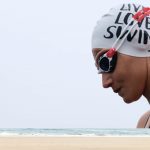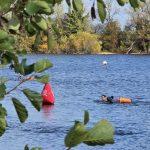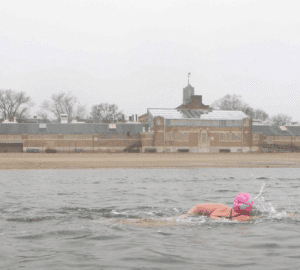
Back to swimming foundations – and why it’s worth it for experienced swimmers
It’s very easy in swimming to accumulate distance in an effort to improve your fitness and strength without ever questioning whether you could be moving through the water more efficiently. If you swim a lot, you probably assume that the foundations of your swimming stroke are firmly in place and you should be working on more advanced skills. However, even if you’re an experienced swimmer, there is value in checking and reviewing the fundamentals, such as how well balanced you are in the water and whether you are truly relaxed where you should be. Swimming is a skills-based activity and if you want to swim well, you ought to review and refine your skills from time to time.
Last weekend I went along to an “Effortless Endurance” workshop organised by Total Immersion coaches James Ewart, Penny Wilkin and Susan Cheshire. The majority of people on the course were relatively new to swimming and the emphasis was on preparing the foundations for developing an efficient front crawl. This meant we spent a lot time at the beginning doing exercises that didn’t seem to have a lot to do with swimming, but actually turned out to provide real insight.
Having read the late Terry Laughlin’s first Total Immersion book, as well as many of the articles he wrote for us at Outdoor Swimmer, these were exercises that I knew about but had previously dismissed as trivial since I’ve been swimming from the age of four. This weekend, I decided to embrace them and see if they could teach me anything new about swimming. The brief answer is that they did.
A core principle with Total Immersion is that you need to learn to balance in the water, and be comfortable and relaxed in it, before you try to move through it. Balance is achieved by letting yourself sink into the water and allowing it to support you. Apart from holding a very light tension through your core (the visualisation suggested was to imagine gently clenching a walnut between your buttocks – but not trying to crack it!) you release any tension in your body, especially in my case around my neck and shoulders. With the ‘torpedo’ drill, TI coaches will get in the water and physically drag you through it, so you can really feel if you’re doing it right. After releasing any tension in the neck, you should feel that neutral head position with good head spine alignment and posture.
The second exercise was an extension of the torpedo that brings the arm into play and is called ‘Superman’ because the position you hold resembles that of Superman flying. It is a further balance and posture drill combined with teaching the arm positions in terms of width and depth at the point just before you initiate the catch. Again, this deceptively simple exercise can show you a lot about body position and awareness.
After balance, the next level in the TI skills pyramid is streamlining (the top, and smallest part, is propulsion, which wasn’t part of this course). We therefore moved onto skate drill, which isolates the hand entry into the water. Often, when swimming, there are so many moving parts it can be hard to control your arms and hand to direct them precisely as you want to. The skate drill allows you to do this. We then progressed to full stroke swimming with further visualisations and focus points to help maintain balance while switching from one arm to the other, and added in some simple breathing drills to finish off.
One of the other participants on the course asked me if spending time doing these basic drills was boring given my years of swimming experience. I have to admit that normally when training, I do enjoy a big front crawl set. Twenty times 100m with 10 seconds rest after each? Bring it on! However, I can honestly say I really valued taking the time to step back and look again at these basics that I’ve taken for granted for so long. I’ve got some new ideas to experiment with in my swimming, and every time I learn something new about swimming I seem to enjoy it more.
Find out more: twobeatkick.com/ti-effortless-endurance-workshops.html








